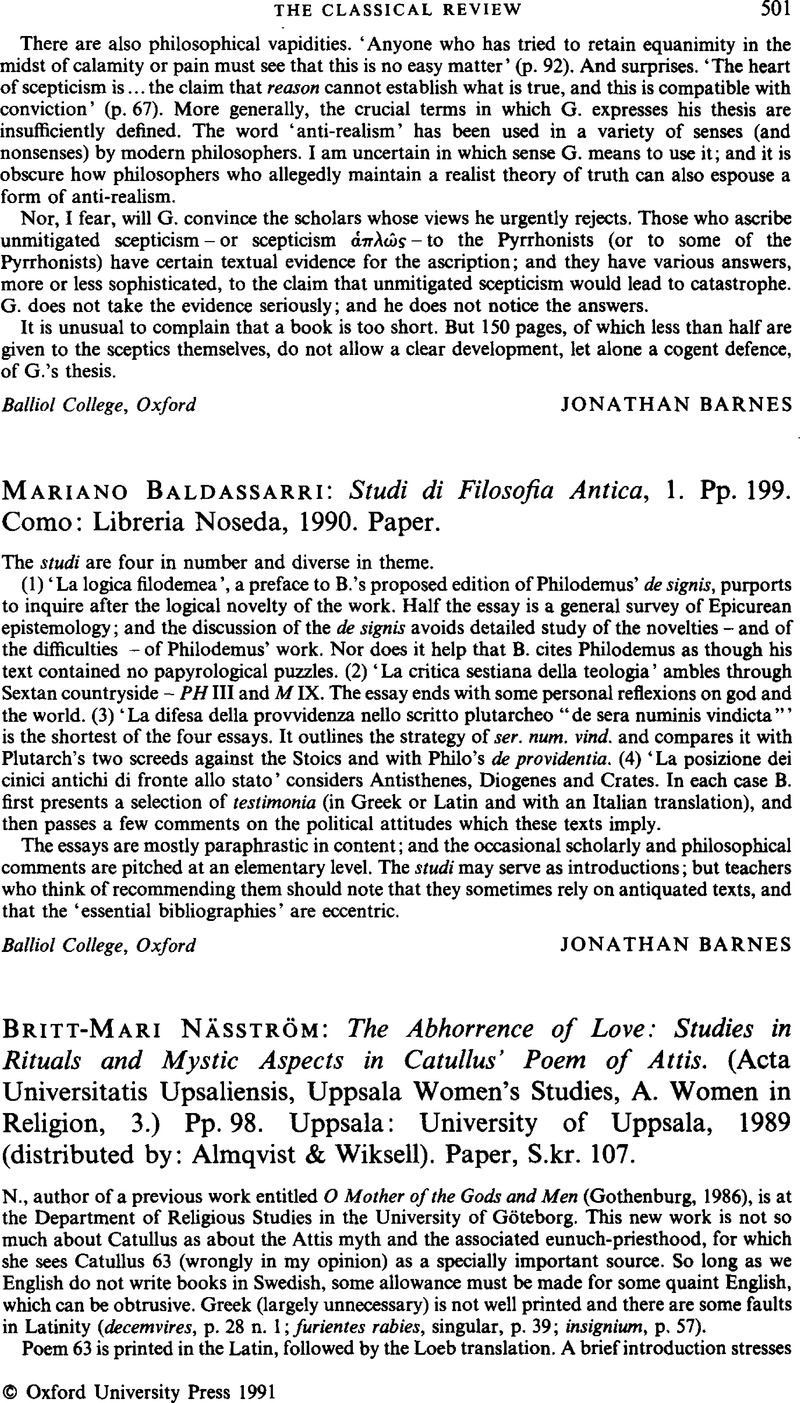No CrossRef data available.
Published online by Cambridge University Press: 16 February 2009

1 Hepding, H., Attis: seine Mythen und sein Kult, Giessen, pp. 142–143.Google Scholar
2 Interestingly, A. D. Nock was also tempted by this phrase of Catullus, though he kept it in perspective: Essays on Religion and the Ancient World, Vol. 1, Oxford, 1972, p. 9.
3 This view rests very much on the interpretation of Aug. CD 7.26 ut post mortem vivat beate, which is increasingly though not necessarily validly being taken as referring to the aspirations of those who castrate themselves: N. p. 83, Sfameni Gasparro, op. cit., p. 105, Burkert, W., Ancient Mystery Cults, Cambridge Ma., 1987, p. 25Google Scholar. Hepding, p. 70, notably omits the passage.